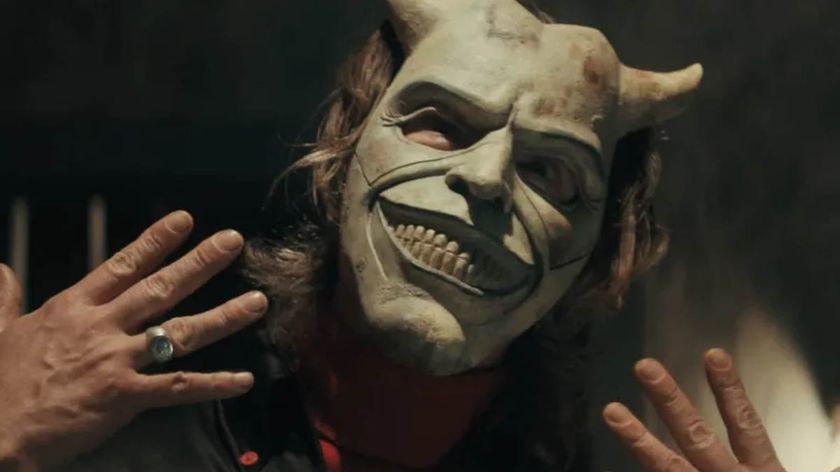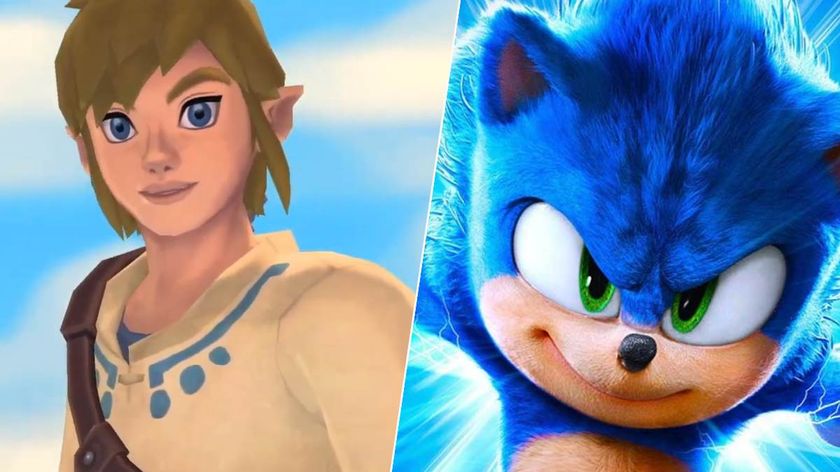10 Movies You Didn't Know Were Comics
Secret graphic novel origins…
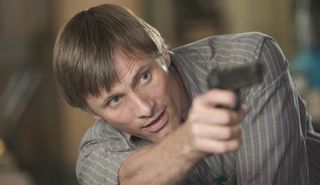
A History Of Violence (2005)
The Comic: A History Of Violence
Written by John Wagner (whose work also spawned Judge Dredd) and illustrated by Vince Locke, the book was originally published by Paradox Press in 1997, and was then bought up by DC's Vertigo imprint.
David Cronenberg did a superb job translating the book's look at small town American life shattered by mob violence, drawing great critical responses and Oscar attention.
The first half of the film stays roughly faithful to the book, but writer Josh Olson (who nabbed an Oscar nom for the solid script) has admitted that he had to take several liberties with the rest in order to make the complex revenge plot fit a cinematic structure.
And Cronenberg made his own changes - including switching the pivotal character of Ritchie to Tom's (VIggo Mortensen) brother to give his fate more impact.
Franchise Potential? The story wraps up in both the film and comic book versions, so we're going to go with no. Unless, you know, we introduce zombies into the mythology.

The Mask (1994)
The Comic: The Mask
The character began life way back in 1982 as a simple sketch by Mike Richardson, which later spawned a series of comics called Masque under the Dark Horse Presents title.
But it was relaunched by artist Chris Warner in the company's Mayhem anthology, with writer John Arcudi and artist Doug Mahnke, launching what was described as "a combination of Tex Avery and The Terminator". Despite getting cancelled, it returned in 1991 for a limited run.
Chuck Russell brought the film to the screen, finding the perfect role for Jim Carrey at the height of his rubber-faced annoyance stage.
He's Stanley Ipkiss, nerdy, awkward bank teller who just wants to be special, and gets his chance when the Mask Of Loki comes into his life. Soon, he's a cartoon freak with strange powers and the ability to chat up the likes of Cameron Diaz (in her first film role).
Franchise Potential? Oh, yes. While Carrey never returned for the originally planned The Mask II, the horror came back in 2005 for the Jamie Kennedy-starring Son Of The Mask.
In which another hapless zero - this time an aspiring cartoonist - finds the mask affecting his life when he accidentally wears it during sex with his wife. The resulting super-powered baby causes chaos. But the film pretty much killed any further interest in the character stone dead.

Howard The Duck (1986)
The Comic: Howard The Duck
A Marvel character created by Steve Gerber and Val Mayerik, Howard got his start in the title Adventure Into Fear in 1973, the graduated to his own book in 1976.
A parody of genre fiction with plenty of post-modern touches (before most people were even thinking of such things), Howard quickly became a cult favourite, and has cropped up in crossovers with most of the major Marvel heroes. Oh, and Disney sued the company to make them change his design as it considered the original too close to Donald Duck…
Based on the comic, you can see why Howard was considered a prime candidate for movie stardom - he's a wise-cracking, lovable type with plenty of back-story.
But the movie - directed by William Huyck and produced by none other than George Lucas (a big fan) turned into one of the biggest turkeys of all time, scooping four Razzies.
John Landis was offered the first stab at the script, but turned it down because the chaotic police car crash-laden finale was too close to The Blues Brothers. Is he sure that's the reason? Not that it was, you know, awful?
Franchise Potential? Ahahahahahahha! Aha! Aha… you are joking, right?
This goose is cooked. But it'll get remade one day. All roads lead to Howard.
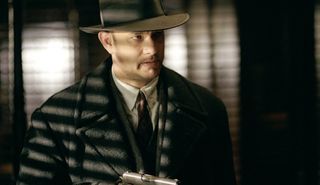
Road To Perdition (2002)
The Comic: Road To Perdition
The graphic novel, created by Mac Allan Collins for Paradox Press (owned by DC), originally saw the light of day in 1998.
It's loosely based on the Manga series Lone Wolf And Cub, in that the main character (Michael O'Sullivan, mob enforcer) is betrayed by his bosses and forced to flee with his son on a revenge quest.
Sam Mendes picked the film to follow his Oscar-scooping American Beauty. Featuring a script by David Self and a gutsy, much darker than usual performance from Tom Hanks,
While Self's first draft hewed close to the novel, the script underwent doctored revisions, which ended up shifting it away, with several of the characters tweaked and Jude Law's hunter character added anew.
Franchise Potential? The movie did decent business, but there are no current plans to make a sequel. That said, Collins did write two sequels (Road To Purgatory and Road To Paradise), which follow Collins Jr as an adult.
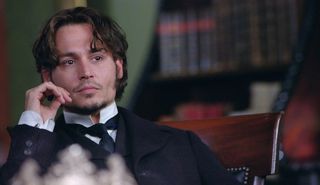
From Hell (2001)
The Comic: From Hell
Alan Moore - yes, the man behind Watchmen and V For Vendetta - originally created the story in serial form for the Taboo anthology comic book. With art by Eddie Campbell, the book only lasted a few issues, then bouncing around other titles before Campbell's own company produced trade paperbacks collecting the various stories.
From Hell posits a theory about the identity of Jack The Ripper that ties it to a royal conspiracy and a fascinating - if fictional - glimpse into the era.
Albert and Allen Hughes decided to tackle the tale as their first move away from urban cinema. They grabbed Johnny Depp's interest, and he signed on to play lead detective Fred Abberline, whose psychic visions help him uncover the mystery.
The film had a mixed reaction - Moore, somewhat naturally, wasn't a fan - and didn't exactly set the box office alight. The sprawling original book (which reached 576 pages) can't have been an easy job, though the movie changes many big things (Abberline, for example, is neither young, an opium addict or psychic in Moore's tale).
Franchise Potential? There's no sequel and no one has expressed interest in trying to get cinematic follow-up going.
Plus, who wants to be on the receiving end of a curse from Alan Moore?
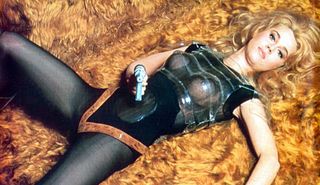
Barbarella (1968)
The Comic: Barbarella
Barb first slinked into comic strip life in 1962 as the creation of Jean-Claude Forest and was collected as a series in 1964 by Eric Losfeld. It caused controversy in its native France for its sexually suggestive material, becoming known as the first "adult" comic book despite relatively mild erotic content.
Our heroine is a young woman who travels between planets and has adventures that largely turn sexual. And she was most likely modeled on Brigitte Bardot.
The film loosely adapts the book's plot, but focuses on Barbarella's mission to save Earth by tracking down doctor Durand Durand.
It's full of sex scenes, most of which are more funny than explicit. Oh, and the Excessive Machine, which tortures by giving sexual pleasure. She's more than a match for it.
The movie didn't get great reviews and failed to win an audience on its first release. But it's since become hugely influential in pop culture.
Franchise Potential? No sequels were made, but a reboot is currently trundling the halls of development hell.
Robert Rodriguez had been attached, but the current captain is 21 helmer Robert Luketic.
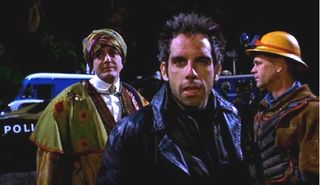
Mystery Men (1999)
The Comic: Flaming Carrot Comics
In 1984, Bob Burden dreamt up the wacky concept of a man who reads 5,000 comics in a single sitting and becomes brain damaged, leading to him dressing in a giant carrot mask and costume and battling crime.
The character appeared in titles for various comic companies, enjoying a run under Dark Horse for a while and a relaunch by Image Comics in 2005.
Occasionally, Carrot would be part of a team called The Mystery Men, a sort of low-rent X-Men with various characters including Mr Furious and The Shoveler.
Universal hired ads director Kinka Usher to turn the Mystery Men into a movie. But despite the presence of Ben Stiller, Hank Azaria, William H Macy and Greg Kinnear and the killer concept of wannabe, slightly rubbish heroes, it flopped.
It's beloved as a cult film, however - and is well worth watching.
Franchise Potential? The dodgy box office means we're unlikely to see another, and most of the actors involved would likely now be too busy/expensive to warrant collecting the original case back.
There are loads of Mystery Men stories out there, though - maybe someone should try again?
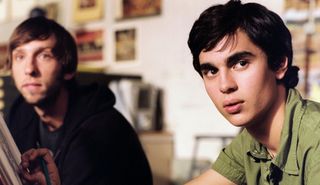
Art School Confidential (2006)
The Comic: Art School Confidential
Ghost World creator Daniel Clowes originally dreamt up Art School Confidential as a lark on four spare pages in another title (Eightball 7, to be exact), figuring that it would be a fun inside joke for fellow arty graduates.
Little did he know it would become an underground publishing phenomenon and get photocopied by thousands of readers. He ended up properly republishing it in the collection Twentieth Century Eightball.
Terry Zwigoff - who had previously brought Ghost World to the screen in 2001 - decided to loosely base a film on the title, though it needed a lot of adaptation to stretch the short story to feature length.
The film finds Jerome pursuing his lifelong creative ambitions at art school. But he soon learns reality is quite different - and a lot more difficult.
Franchise Potential? The lacklustre reviews and small return mean this is destined to be left as a curio.
Plus the story really doesn't lend itself to sequels.
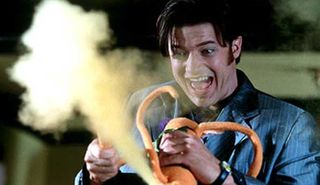
Monkeybone (2001)
The Comic: Dark Town
Kaja Blackley wrote the original graphic novel, which was illustrated by Vanessa Chong and published by Mad Monkey Press in 1995.
It follows comic book artist Stu, who finds himself trapped in the titular locale after a car accident, and discovers that his creations - including crazed critter Monkeybone - have come to life. Naturally, they cause him real trouble.
Perhaps as a sign of things to come, it was only ever published as one volume.
As for the pic, it all started so well - director Henry Selick was a self-avowed fan of the original, begging Blackley for the rights in a letter that included his admission: "I’ve never felt any project was closer to my sensibilities than this one."
Sadly, Monkeybone - as it became - fell victim to uncertainty and studio wrangling and the final product emerged as a mere shadow of the original.
With its blend of live action and stop-motion, it cost $75 million to make and only earned $7million worldwide.
Franchise Potential ? Um, no. Despite a loyal following, it's unlikely any studio would want to touch such a toxic property, and there's not much else on which to base any likely follow-ups.
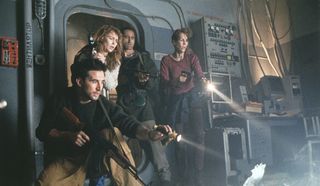
Virus (1999)
The Comic: Virus
Writer Chuck Pfarrer originally conceived the idea for a virus as a script in the early 1990s. His story saw an alien life form taking over a Chinese research ship and using the vessel's electronics and dead crew to propagate itself.
But upon realising that visual effects tech wasn't ready to tackle the concept, he sold it as a comic to Dark Horse, where Canadian artist Howard Cobb provided the pics and it was published in 1995.
The movie, which was directed by SFX man John Bruno (films directed since: zero) switches the disabled ship to a Russian vessel, but maintains the plot of salvage workers (including Jamie Lee Curtis and William Baldwin) discovering it.
Virus earned $14 million off a $60 million budget. This might be because it's clag.
Franchise Potential? Very, very doubtful. Stranger things have happened, though…
James White is a freelance journalist who has been covering film and TV for over two decades. In that time, James has written for a wide variety of publications including Total Film and SFX. He has also worked for BAFTA and on ODEON's in-cinema magazine.
